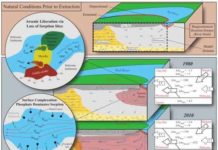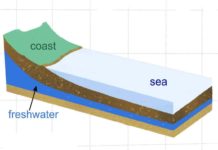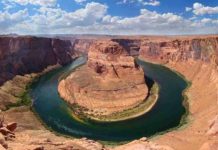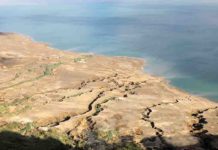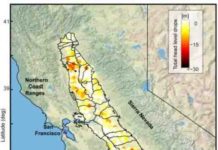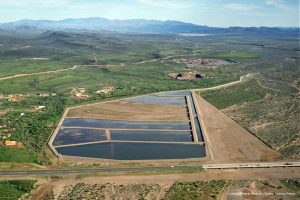
Although years of drought and over-pumping have significantly depleted groundwater in Arizona and California, a new study shows the situation has an upside: It has created underground reservoirs where extra surface water can be stored during wet times so it is available during drought.
The study, published in the journal Environmental Research Letters in March, also found that regions that actively store surface water in underground aquifers have increased their groundwater supply over time, even as surrounding areas depleted theirs.
The findings are important because they show that techniques used to increase groundwater storage are working. With projected increases in droughts and floods with climate change, and California investing $2.7 billion to expand water storage, these techniques could help drought-prone regions prepare for extremes, said lead author Bridget Scanlon of The University of Texas at Austin’s Bureau of Economic Geology. The bureau is a research unit at The University of Texas Jackson School of Geosciences.
“In many regions now we’re dealing with these extremes of drought and then intense floods, and that’s a real challenge for water resource managers,” Scanlon said. “To try and resolve this disconnect between supply and demand, we can store water in depleted aquifers.”
The study examined decades’ worth of groundwater data from California’s Central Valley and active management areas across central Arizona—both regions that collect extra water from surface reservoirs and store it in underground aquifers using a technique called managed aquifer recharge. The method has been used in the Central Valley since the 1960s and in Arizona since the 1990s.
As part of the storage strategy, the regions also managed their water resources through conjunctive use, relying primarily on surface aquifers during wet periods and on groundwater during dry periods.
“When you do that, you stop pumping the groundwater so it can recover,” Scanlon said. “But you are also adding recharge from surface water, so you have a double benefit.”
The researchers found that groundwater in Arizona’s active management areas has been rising an average of 0.3 to 1.6 feet per year since the early 2000s. In contrast, nearby areas saw groundwater declines of 1.5 to 4 feet per year. The Central Arizona Project aqueduct, completed in 1993, allowed aquifer recharge and conjunctive use by delivering water from Lake Mead that replaced groundwater-based irrigation in farms. The water was also transported to spreading basins where it percolated into the aquifer.
In California, the researchers found that water imported through the Central Valley Project and California State Water Project canals helped reverse long-term declining groundwater levels by reducing groundwater pumping during wet periods and recharging groundwater using spreading basins. For instance, in one managed aquifer recharge site, the study shows that groundwater levels today would be about 300 feet lower if water storage techniques had not been applied. And although declines in groundwater levels were observed during drought, the declines were not as dramatic as those observed outside of the managed aquifer recharge areas.
Thomas Harter, the Robert M. Hagan Endowed Chair in Water Management and Policy at the University of California, Davis, said the research illustrates the value of groundwater recharge techniques by blending long-term data with detailed accounts of water management strategies.
“I appreciate Bridget’s work to provide a synthesis, not just in California, but also the comparison between California and Arizona, that points toward the larger, global significance of aquifer recharge and conjunctive use,” Harter said.
There is plenty of storage space left in aquifers, researchers found. Central Valley aquifers have about 44 cubic kilometers of space, the same amount of space as all of California’s surface reservoirs. In Arizona, the space in the aquifers corresponds to about 100 cubic kilometers of space, about three times the capacity of Lake Mead, the largest surface reservoir in the U.S.
Developing additional aquifer recharge projects could help fill the empty space and enhance water security during climate extremes, Scanlon said.
“These approaches will help in dealing with these current extremes and will help in the future when we have to deal with them even more,” Scanlon said.
Robert Reedy and Kristine Uhlman from the bureau and Claudia Faunt and Don Pool from the U.S. Geological Survey in California and Arizona also worked on the study.
The study was funded by the State of Texas Advanced Resource Recovery Program and the Jackson School of Geosciences.
Note: The above post is reprinted from materials provided by University of Texas at Austin.


